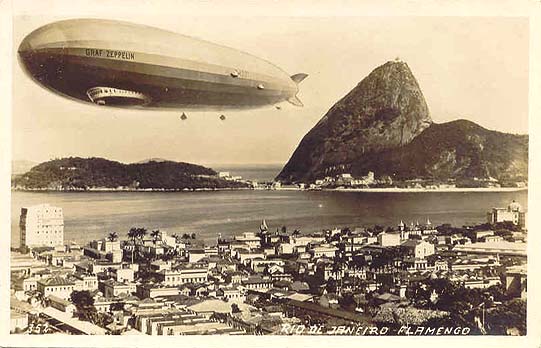
 As debate on the reportage of the COVID-19 crisis in India unfolds, journalists and researchers Ruhi Khan (LSE) and Danish Khan (University of Oxford), throw a spotlight on the political economy of the media in India. Through interviews with those at the helm of media organisations in India, they show how certain control mechanisms are employed by the State to exert pressure on the media and dictate the narrative.
As debate on the reportage of the COVID-19 crisis in India unfolds, journalists and researchers Ruhi Khan (LSE) and Danish Khan (University of Oxford), throw a spotlight on the political economy of the media in India. Through interviews with those at the helm of media organisations in India, they show how certain control mechanisms are employed by the State to exert pressure on the media and dictate the narrative.
India cannot breathe. And by censoring the ground realities and finding a positive political spin in this humanitarian crisis, some in the mainstream media in the country seem to be choking it further.
As the second wave of the COVID-19 pandemic takes India by storm, the raging death and devastation has thrown unprecedented challenges to those on the ground – frontline health care workers, reporters, activists and civil society. Yet the steady denial of the health catastrophe by the State, arrests of those who request life-saving help on social media, gag-orders on hospitals that ask for more oxygen as their limited supply runs out, a diktat to media houses to ensure positive news coverage and a clampdown on social media from carrying posts showing ground realities, have become continuous features of this Indian COVID-19 tragedy.
Is the largest democracy in the world now an elected autocracy? ‘Elected’ being the keyword, as political parties continued with their election rallies, amassing crowds of thousands despite the number of cases steadily rising and dead bodies piling high.
The Election Commission of India was held ‘singularly’ responsible for the surge in cases as it oversaw elections in four states and a union territory over the past month and allowed large rallies and roadshows that served as served as incubators of the deadly virus. A medical expert even called Prime Minister Narendra Modi a ‘super spreader’ for holding political rallies. Yet the television media, instead of being critical of the rallies, ran live footage of election sloganeering.
Some media houses continuously ran reports on the elections even when the cry of the hour demands ground reporting of the health crisis and holding the government responsible, argues journalist Rana Ayyub, who has also written a scathing piece on the government’s handling of the crisis for the Time magazine. At a time like this, local newspapers and independent media along with international coverage have emerged as a more credible mirror to the unfolding tragedy.
Another super-spreader event promoted by the chieftains in power was the Kumbh mela – where millions of devotees gather on the banks of the river Ganges to take a ‘holy dip’. And when images of overflowing cremation grounds made it to the cover of international press, the government’s angry response was that it hurt Hindu sentiments and was ‘fake news’ to create panic and tarnish India’s image. Some journalists and commentators on Indian television even debated whether images of cremation should be carried in the press, rather than addressing why so many cremations were taking place, and challenging the low government estimates of the death toll.
“Things have come to such a pass that the data on Covid patients — who die — is being fudged brazenly by governments but even as the numbers are being massaged, the stats look spine-chilling,” writes Sheela Bhatt in the Gulf News. Barkha Dutt, who has been consistently reporting from across India and bringing chilling images and heart wrenching stories to light through her YouTube news channel, writes in the Washington Post that “misplaced triumphalism, complacency and wilful incompetence have brought us to our knees”. She lost her father to Covid last week.
While local reports and data from independent news sources contradict the government figures and raise alarming questions on the delay in deployment of emergency aid received from across the world, the government is busy holding sessions on image management.
At a time when India is grappling with a health emergency where the media has a crucial role to play in ensuring the checks and balances are in place, throwing the spotlight on the political economy of the media becomes paramount.
The state of journalism in India
In 2017, we conducted extensive semi-structured interviews with ten journalists and editors at the helm of news organisations to reflect on how the Indian media is affected by both external and internal power structures and stakeholder relationships. All their responses were anonymised to give them the utmost freedom to express their opinions.
While this research was conducted prior to the Covid crisis, it is a reflexive study of the present state and the future of journalism in a burgeoning yet fractured democracy like India. We looked at the functioning of English language press in India and argued that there are certain control mechanisms that the state employs to exert pressure on media organisations. This happens primarily, though not exclusively, through three broad strands.
Advertising and advertorials (or paid news)
In India, the government is the biggest single advertiser and together with its allies in the corporate world has power to affect the revenues of media organisations. Advertising spend in India has been growing at a healthy 10-15%, with TV leading, followed by print and digital. The press council of India warns that ‘paid news’ has become pervasive, structured and highly organised. Others argue that paid news in India disrupts press freedom and ethical conduct and helps in manufacturing consent, as often these advertorials are disguised as news with no way to distinguish them as paid news.
Our respondents agreed that the focus on advertising is huge in media organisations and some believe that often it influences the editorial content. One called it “the most lethal weapon the state has to defang the media” while another says, “the government has a hold on advertising, therefore the ruling class controls.”
“Overall the control of gagging the media is a thing of the past although they have tried to through advertising and other things,” said one respondent. “The problem in India doesn’t always stem from the intentions of the editors or proprietors but rather arises out of the business model. Electronic media (TV specifically) draws 80% of its revenues from adverts. This exaggerates the importance of ratings. Any model that prioritised ratings over satisfaction is bound to suffer inadequacies,” said another.
Coercion & Ownership
India is one of the biggest media markets in the world, yet the ownership of the media is concentrated in the hands of a select few. Owners often interfere in editorial decisions to prevent stories against advertisers and the ruling political establishment being carried in their publications. The resignation of the Economic and Political Weekly editor and the exit of Hindustan Times editor are glaring examples of these.
According to one respondent, the best way “to control the publication of news is to play upon the fear and greed of media owners.” Another said, “the influence of the ruling class and ruling politicians is huge and therefore you have a blacklist and gag orders.”
Also, by heavily investing in the media companies, corporations could exert a direct yet subtle influence on editorial content. India’s richest businessman Mukesh Ambani – a supporter of the prime minister Narendra Modi – has with his associates given loans to five news media companies, including Network 18 which led to its co-founder and editor in chief Rajdeep Sardesai tendering his resignation. “Ownership patterns and business models are under siege” and owners prefer editors “who toe the line, who are close to the establishment because ‘access’ is now seen to hold the key”, Sardesai had said.
Most of our respondents echoed similar views. One said that “it’s for the first time that political pressure and corporate pressure has come together”. Another agreed that “there is a symbiotic relationship between Hindu nationalism and big business. Both are hand-in- hand, both reinforce each other”.
“The media is not a social sector or charity. I have not seen management gain total control though,” said one respondent, while another suggests the need for “a proper media watchdog, otherwise it’s very easy to succumb.”
Public Opinion: TV & Social Media
Television became an important segment in our analysis as it is a prominent institution of public sphere in India’s modern society. It has a wider reach and an uncanny ability to influence public opinion. It has often been criticised for dumbing down news and our respondents almost unanimously highlighted the worrying nature of television reporting today.
“News anchors started inserting certain words for the othering- they are like this, they are like that, and those words slowly found acceptance… It is like giving a monkey a gun, he doesn’t know the damage he can cause. In the bid to do two things- one is to please the government and the second is to get as many eyeballs as possible by spectacle of your stupidity… Because the economics of television channel require you to get the most viewership and do whatever you have to make a circus every night…,” said one respondent.
Social media like Twitter and Facebook have emerged as new platforms for news and opinion. There is an army of political operatives whose sole job is to spread lies, disinformation, hate and propaganda on social media to confuse and corrupt the news environment. These have fuelled violence and even murder. Threats, defamatory statements and abuse is extensively used against those critical of the government and have been also deployed in crisis situations like the Covid pandemic.
“India is a noisy democracy. People are emotional sentimentalists. Discourse, debate is second nature. People are also politically aware and passionate about their preferences. There is little homogeneity. It is important to be heard over the din,” argued one respondent.
The lifeline
The political bias and ideological slant is now more visible than ever. Most of our respondents saw this as a worrying trend eroding the edifice of an independent press in a vibrant democracy. While some have compared this to a subtle emergency like situation, others have blamed competition and staggering revenues for compromise on editorial integrity.
However, Indian media is still in some measure pluralistic and diverse. This needs to be strengthened. Print is robust, digital is expanding and television is growing and diversifying. Self-regulation, with all its limitations, has perhaps not yet failed. Some journalists who once worked in mainstream newspapers are today running digital platforms that monitor and critique news. Many local journalists are reporting from nooks and crannies of India on the death and devastation, with much peril to themselves.
As one of our respondents said, ‘there seems to be a homogenous media for a heterogeneous audience’, and this we believe will not sustain. Our suggestion is to look for diverse journalistic voices, expand the media platter to include the smaller local media that bring the ground realities rather than focus on newsroom entertainment, and include foreign media that escapes the constraints of the political economy of the media in India.
India continues to break the record for daily Covid infections and deaths and as the virus spreads from cities to villages, the challenge of reporting the Covid crisis has also increased. At a time when information is an important currency to deal with the Covid pandemic, biased media fuels misinformation and disinformation. Public awareness and engagement is essential to challenge the false narrative and demand accountability from not just the state but also the media. One way is to support the reader-funded media and the many local journalists who are on the ground painstakingly reporting on the unfolding tragedies and holding truth to power. In a country that is gasping for breath, media plurality is a much-needed oxygen.
—
Our 2017 respondents include senior journalists and editors across news organisations like NDTV, Times Now, Pioneer, Outlook, The Hindu, Mumbai Mirror, The Wire.in, Scroll.in, and News Laundry. A part of this research titled ‘Undemocratic’ Representations in Indian Media: Press Freedom & State – Media Relations was presented at the IJPP conference, Reuters Institute for the Study of Journalism, University of Oxford in September 2017.
This article gives the views of the authors and does not represent the position of the Media@LSE blog, nor of the London School of Economics and Political Science.
Featured image: Photo by Naveed Ahmed on Unsplash





